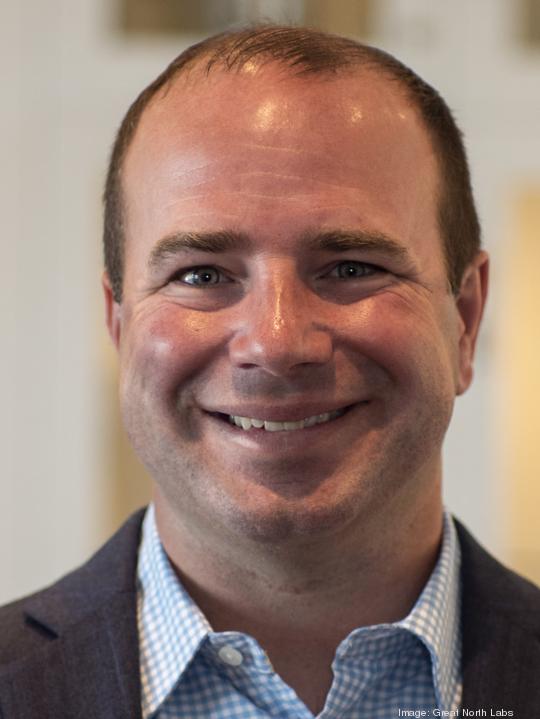
Massive consumer app successes can be successfully launched and scaled in the Midwest. Groupon and GrubHub are two examples of huge breakouts. Cameo is the most recent example, with its $50 million Series B round. Ezra Galston of Starting Line and Brent Hill of Origin Ventures are two Midwest VCs who invested in the $3.2 million Seed round of Cameo, along with Chicago Ventures. They were later joined by Pritzker Group through its participation in Cameo’s $12.5 million Series A round.
So, investors, how do you evaluate these early-stage consumer app startups, and set yourself up to share in a breakout success?
During the three years I’ve been a full-time VC focused on Midwest startups, I have been surprised that we aren’t seeing more Midwest consumer app startups receive venture funding, given the massive successes cited above. Why is that, I wondered? From what I can tell, it stems from an evaluation problem. Generalist investors are applying the wrong benchmarks to early-stage consumer internet startups.
Most Midwest VCs are very comfortable with investing in enterprise SaaS startups and how to benchmark such opportunities, because those are the most common startups we see here. Because of this, the most common pitfall for VCs at generalist funds is to try to apply SaaS-like benchmarks to early-stage consumer app startups when considering a potential investment.
To overcome this problem – to help raise the floor for all Midwest VCs – I’ve put together some thoughts that I think shed light on the topic. This advice comes from my past experience as the co-founder of a customer acquisition platform for mobile apps and games. At NativeX (acquired by Mobvista in 2016), I was in close contact with many founders and growth teams, including the world’s leading mobile-first, consumer app startups, along with the handful of global investors who have demonstrated positive returns investing in the consumer app space.
The Best Signals, and the Wrong Signals
First, let’s talk about evaluating founders and their strengths. The founding team should possess strong product design skills. For example, the team may have an intense focus on designing for a specific user persona or an intense focus on designing an MVP that creates a strong “compulsion loop” driving a high level of retention/engagement, and may take inspiration from design patterns found in other successful consumer apps – as, for example, how Crossy Road’s developer took inspiration from Flappy Bird. They should also possess strong business information/analytical skills with an experimentation mindset.

What skill is not important for consumer app founders? Sales! This functional skill is not a priority for a consumer app startup, but it would rank in the top two functional skills when evaluating SaaS startups. There are millions of consumer apps, and most categories have tens of thousands of apps. Sales has virtually no relevance here, whereas in SaaS a super-strong sales team with a mediocre, or even below-average, product development talent can often still succeed.
Now, let’s talk about the best milestones by stage of investment. In the Pre-Seed stage, we should mainly be looking for a founding team with a very strong experimentation mindset and the aforementioned product design skills. You don’t want a startup team that falls right in love with their first idea. Founders need to be flexible. What does that mean to Helsinki-based Supercell, one of the most profitable game companies in history? Sharing his top 10 takeaways from a decade as CEO of Supercell, Ilkka Paananen said, “This means that we don’t only kill games in beta, we kill good games.” (Via an interview with Dean Takahashi at VentureBeat.)
For investors, we should focus on identifying if the total addressable market (TAM) is big enough to matter, if the app becomes dominant in its respective category.
In the Seed stage, founders should be able to demonstrate that they have some kind of compulsion loop driving high levels of engagement and retention with their users, especially compared against similar apps. Even Uber and Snap had clearly demonstrated the ability to create passionate users of their apps before closing their Seed rounds.
There are mobile app data services such as App Annie, Apptopia, and MobileAction that we can use, or encourage founders to use, to benchmark apps against competitors in the same category. These mobile data services range in price and services, with the latter two being more accessible to startup/micro-VC funds.
At the Series A stage, the focus becomes greater on top-of-the-funnel metrics, such as user acquisition costs, and how much it costs to acquire an addicted user. It is often very important for consumer app startups to measure their viral coefficient – although for many, a mix of paid and organic user acquisition will most likely be required. For more on paid and organic user acquisition, check out this interview with the founder of Calm on the “This Week In Startups” podcast.
What’s the wrong thing to look for at the Series A stage? Nice user growth charts centered around vanity metrics, like “total downloads.” Unlike the SaaS world, such numbers can easily be gamed.
Consumer apps do come in different forms. There are pure direct-to-consumer apps, which largely can rely on the framework outlined here for evaluating. There are also many marketplace-type consumer apps like Groupon on GrubHub that require selling to businesses in addition to selling to consumers. A hybrid approach using the best of enterprise and consumer diligence methods is warranted when evaluating such hybrid opportunities.
Inspiration
If you liked this post and are inspired to continue to build expertise in investing in consumer app startups, I recommend you check out New Stack’s founder, Nick Moran, who recently interviewed Gigi Levy-Weiss from NFX on “The Full Ratchet” podcast.
My inspiration for this post came from conversations over the past year with Andrew Artz at Social Capital, who is someone I deeply respect in early-stage consumer app investing. Special thanks to Muhammad Abdurrahman, founder of Clutch, who DMed me to encourage me to write this post after seeing me vent about this issue on Twitter a few days back. Muhammad, I wish you and all the other founders in the Midwest the best of luck with your consumer app startups, and I hope this post provides some level of helpful guidance for you and any interested investors.
About the Author: Rob Weber is Managing Partner at Great North Labs, an early stage VC fund focused on Upper Midwest B2B and B2C startups. Some of its current consumer startup investments include Chicago-based 2ndKitchen, Inhabitr, and PrintWithMe; Wisconsin based Allergy Amulet; and Twin Cities-based TeamGenius and Plyo. For a recent update on the progress of the Great North Labs debut fund, click here.



